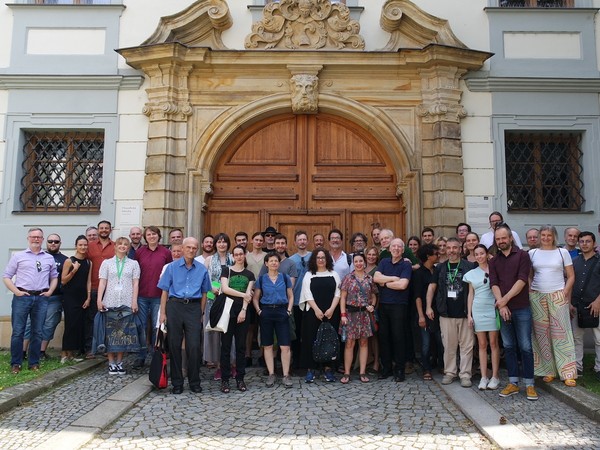Olomouc is the new world centre of semiotics. The International Semiotics Institute (ISI) has found its new home at the Department of General Linguistics at the UP Faculty of Arts. After having operated in various countries, it has moved to the Olomouc semiotics department mainly because of the presence of talented experts with a passion for semiotics. The opening ceremony for the new institute at Palacký University Olomouc was held on 27 October 2022.
The International Semiotics Institute has been in operation since the 1980s. Its has been located in various places in different countries, such as Finland, Canada, and Lithuania. Now it has found its new nexus in the Czech Republic, at Palacký University Olomouc.
“In order to maintain the influx of fresh ideas, the International Semiotics Institute pursues the development of semiotics wherever there are talented people with the desire to dedicate themselves to semiotics. And that is why we have happily accepted the offer to make our department the new home of the Institute,” said Ludmila Lacková, Head of the Department of General Linguistics. According to her, Olomouc is a renowned place in the context of semiotics, thanks to the long-standing research in biosemiotics at UP, as well its excellent staff, experts in semiotics from all over the world.
The main mission of the ISI, which will be headed by Dr Tyler James Bennett from the Department of General Linguistics at the Faculty of Arts, will be to provide workshops, conferences, seminars, and courses and maintain contact with semiotics students and experts all around the world. ISI is also behind outstanding book publications as part of the Springer series Numanities – Arts and Humanities in Progress.
Are you interested in semiotics? Then it may be meaningful to enrol in one of the semiotics courses at the Department of General Linguistics – or visit the ISI Semiotics Library in Křížkovského Street 12, room 1.04.
“There are a plethora of definitions and axioms of what semiotics is. We keep telling our students that semiotics is a network of disciplines, institutions, and friends. It is the only true interdiscipline. As the father of modern semiotics, Umberto Eco, says, semiotics connects all the unconnected: pop culture and medieval philosophy, genetics and communication theory,” said Lacková, who holds a PhD from the Department of Semiotics in Bologna, Italy, which was founded by semiologist, medievalist, aesthetician, philosopher, and writer Umberto Eco as the first of its kind in the world.
According to Lacková, semiotics can have very interesting practical applications, for example in marketing. It helps us understand the function of logos and brands, through multimodal analysis of the meaning of colours, shapes, cultural references, etc. However, there is much more that semiotics can be used for. Students in the Linguistics and Digital Humanities Bachelor’s programme learn through semiotics how humans differ from chatbots.
“Semiotics is for everyone who is naturally curious and wants to look at things from different angles,” Lacková added. As she says, it is suitable for everyone, not just those from the humanities. The curriculum at the Department of General Linguistics focuses on biosemiotics, however there are also courses in marketing semiotics, cultural semiotics, and cognitive semiotics.
